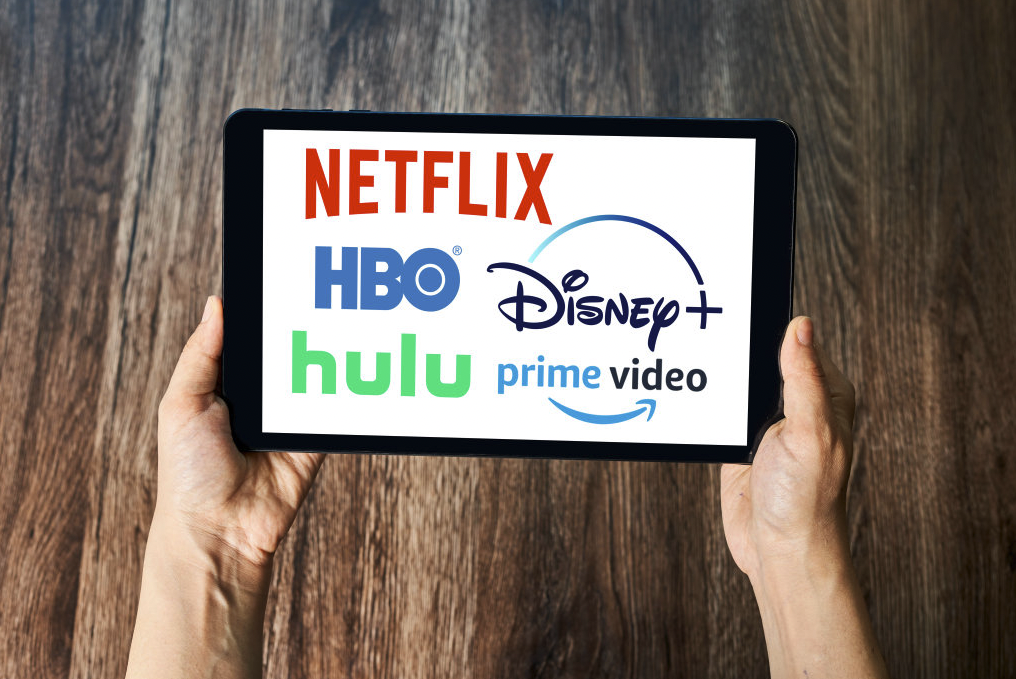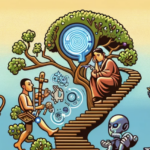
Table of Contents
What is VOD streaming?
VOD streaming refers to the process of viewing digital video content on a computer or mobile device.
This type of streaming allows users to watch videos without having to download them first.
VOD is a popular option for watching movies and TV shows, as well as other forms of video content such as educational videos, product demonstrations, and more.
How does VOD streaming work?
VOD streams are typically delivered via the internet, using a variety of protocols such as HTTP, RTSP, and RTP.
The video content is encoded in a format that can be read by the player, which decodes the video and plays it back on the screen.
The player may also need to buffer the video to compensate for any internet lag.
Is VOD the Same as Streaming?
VOD is a type of streaming, but it is not the same as live streaming. Live streaming refers to the process of watching a video in real-time, as it is being recorded.
VOD, on the other hand, allows users to watch videos that have already been recorded and stored.
VOD is often used interchangeably with the term “video on demand,” but there is a slight difference between the two.
Video on demand technically refers to any type of digital video content that can be viewed at the viewer’s convenience, whereas VOD specifically refers to the delivery method of that content.
VOD Streaming: What is it and how does it work?
Popular VOD Platforms
Below are some of the most popular VOD platforms:
#1 Netflix
Netflix is a VOD platform that offers users access to a wide range of TV shows, movies, and documentaries.
It is one of the most popular VOD platforms in the world, with over 130 million subscribers as of 2025.
#2 Amazon Prime Video
Amazon Prime Video is a VOD service that comes bundled with an Amazon Prime membership.
It offers users access to a library of movies, TV shows, and original content.
Amazon Prime Video has over 100 million subscribers as of 2025.
#3 Hulu
Hulu is a VOD platform that offers users access to a library of TV shows, movies, and original content.
It is one of the most popular VOD platforms in the US, with over 28 million subscribers as of 2025.
#4 HBO GO
HBO GO is a VOD service that offers users access to a library of HBO shows, movies, and documentaries.
It is only available to subscribers of the HBO cable channel.
#5 ESPN+
ESPN+ is a VOD platform that offers users access to a library of live and on-demand sports content.
It is one of the most popular VOD platforms for sports fans, with over 2 million subscribers as of 2025.
What Are The Benefits of VOD Streaming?
There are many benefits of VOD streaming, both for viewers and content creators.
VOD streaming is a convenient way to watch videos, as users can watch them whenever they want, without having to wait for them to download first.
VOD is also a great option for content creators, as it allows them to reach a wider audience with their videos.
VOD streaming is becoming increasingly popular as more people turn to the internet for their entertainment needs.
VOD streaming is a convenient, affordable, and widely available option for watching digital video content.
Whether you’re looking to watch movies, TV shows, or other forms of video, VOD streaming is a great option.
How Does VOD Differ From Live Streaming?
VOD is a type of streaming, but it is not the same as live streaming.
Live streaming refers to the process of watching a video in real-time, as it is being recorded. VOD, on the other hand, allows users to watch videos that have already been recorded and stored.
What is OTT?
OTT stands for “over-the-top.” OTT refers to the delivery of content via the internet, without the need for a traditional cable or satellite TV subscription.
OTT services are becoming increasingly popular as more people cut the cord and move to streaming their entertainment.
What is the Difference Between VOD and OTT?
VOD is a type of OTT service, but there is a difference between the two.
VOD refers specifically to the delivery of video content, whereas OTT can refer to the delivery of any type of content, including audio and text.
VOD is typically used to refer to on-demand movies and TV shows, while OTT can refer to anything from music streaming services to news apps.
What is OTT and how does it work? Over-the-top explained
What’s The Difference Between VOD And SVOD?
VOD is a type of streaming, but it is not the same as live streaming.
Live streaming refers to the process of watching a video in real-time, as it is being recorded.
VOD, on the other hand, allows users to watch videos that have already been recorded and stored.
What are the Different Types of VOD Monetization Models?
There are a few different VOD monetization models that content creators can choose from.
The most common VOD monetization model is subscription-based VOD, or SVOD.
SVOD requires viewers to pay a monthly fee to access all of the content on the platform.
Another common VOD monetization model is transaction-based VOD, or TVOD.
TVOD allows viewers to pay per video, or purchase videos outright.
Additionally, there is ad-supported VOD, or AVOD.
AVOD platforms are free to use, but they make money through advertising revenue.
Let’s look at each a bit more closely:
AVOD (Advertisement-based Video on Demand)
Ad-supported VOD platforms are free to use for viewers.
The platform makes money through advertising revenue, which is typically displayed before, during, or after the video.
SVOD (Subscription Video on Demand)
Subscription-based VOD platforms require viewers to pay a monthly fee to access all of the content on the platform.
The fee can be paid either directly to the platform, or through a third-party such as iTunes or Amazon.
TVOD (Transaction-Based Video on Demand)
Transaction-based VOD platforms allow viewers to pay per video, or purchase videos outright.
TVOD platforms typically use a pay-per-view model, where viewers can buy or rent individual videos.
BVOD (Broadcaster Video on Demand)
Broadcaster VOD platforms are only available to users who have a subscription to the broadcaster’s cable or satellite TV service.
BVOD platforms typically offer a selection of on-demand content, as well as live streaming channels.
HVOD (Hybrid Video on Demand)
Hybrid VOD platforms are a mix of SVOD and TVOD.
Hybrid VOD platforms typically offer a selection of free, ad-supported content, as well as subscription-based or pay-per-view content.
What is VAST?
VAST is an acronym for “Video Ad Serving Template.”
VAST is a standard XML schema that defines how video ads should be formatted and delivered.
VAST is used by ad networks and publishers to deliver video ads to VOD platforms.
VAST is a VOD-specific extension of the VPAID standard.
What is VPAID?
VPAID is an acronym for “VideoPlayer-Ad Interface Definition.”
VPAID is a standard that defines how video ads should be formatted and delivered.
VPAID is used by ad networks and publishers to deliver video ads to VOD platforms. VAST is a VOD-specific extension of the VPAID standard.
What are Pre-Roll Ads?
Pre-roll ads are video ads that are displayed before the main video content begins playing.
Pre-roll ads can be either skippable or non-skippable.
Skippable pre-roll ads typically allow viewers to skip the ad after a few seconds, while non-skippable pre-roll ads must be watched in full before the main video content begins playing.
What are Mid-Roll Ads?
Mid-roll ads are video ads that are displayed in the middle of the main video content.
Mid-roll ads can be either skippable or non-skippable.
Skippable mid-roll ads typically allow viewers to skip the ad after a few seconds, while non-skippable mid-roll ads must be watched in full before the main video content resumes playing.
Those who watch YouTube are familiar with these types of ads.
What are Post-Roll Ads?
Post-roll ads are video ads that are displayed after the main video content has finished playing.
Post-roll ads can be either skippable or non-skippable.
Skippable post-roll ads typically allow viewers to skip the ad after a few seconds, while non-skippable post-roll ads must be watched in full before the viewer is redirected to another page or video.
Why Use VOD?
There are a number of reasons why you might want to use VOD.
VOD allows you to control when and where your videos are played.
VOD also allows you to track how many people are watching your videos, and how long they watch for.
Additionally, VOD can be used to generate revenue through advertising or subscriptions.
VOD can also be used to increase brand awareness and reach new audiences to drive new income generation.
Finally, VOD can be used to drive traffic to your website or blog.
What’s The Difference Between VOD And TV?
VOD is a type of streaming, but it is not the same as live streaming.
Live streaming refers to the process of watching a video in real-time, as it is being recorded.
VOD, on the other hand, allows users to watch videos that have already been recorded and stored.
What are the Advantages of VOD?
There are a number of advantages to using VOD. VOD allows you to control when and where your videos are played.
VOD also allows you to track how many people are watching your videos, and how long they watch for.
Additionally, VOD can be used to generate revenue through advertising or subscriptions. VOD can also be used to increase brand awareness and reach new audiences.
Finally, VOD can be used to drive traffic to your website or blog.
What are the Disadvantages of VOD?
There are a few disadvantages of VOD streaming, though they are generally outweighed by the positives.
One disadvantage of VOD is that it can be more expensive than other types of streaming, such as live streaming.
Additionally, VOD can use up a lot of data if you’re not careful.
Finally, VOD platforms can sometimes be less reliable than other types of streaming platforms
How Businesses Can Leverage VOD
There are a number of ways businesses can leverage VOD.
VOD can be used to:
- generate revenue through ads or subscriptions
- increase brand awareness and reach new audiences
- drive traffic to your website or blog
How Can You Select the Right VOD Services for Your Business?
There are a few things you’ll want to keep in mind when selecting VOD services for your business.
First, consider your budget and what you’re willing to spend on VOD services.
Additionally, think about the types of videos you’ll be streaming, and whether you need live streaming capabilities. Finally, make sure to read reviews of VOD services before making your final decision.
VOD Streaming – FAQs
What is VOD streaming?
VOD streaming is a type of video streaming that allows users to watch videos that have already been recorded and stored.
VOD is often used interchangeably with the term “video on demand,” but there is a slight difference between the two.
VOD refers to the process of storing and accessing video files, while “video on demand” refers to the ability to watch those videos whenever you want.
What are the benefits of VOD streaming?
There are a number of benefits to using VOD streaming.
VOD allows you to control when and where your videos are played.
VOD also allows you to track how many people are watching your videos, and how long they watch for.
What are the disadvantages of VOD streaming?
There are a few disadvantages of VOD streaming, though they are generally outweighed by the positives.
One disadvantage of VOD is that it can be more expensive than other types of streaming, such as live streaming.
Additionally, VOD can use up a lot of data if you’re not careful.
Finally, VOD platforms can sometimes be less reliable than other types of streaming platforms.
How can you select the right VOD services for your business?
There are a few things you’ll want to keep in mind when selecting VOD services for your business.
First, consider your budget and what you’re willing to spend on VOD services.
Additionally, think about the types of videos you’ll be streaming, and whether you need live streaming capabilities.
Finally, make sure to read reviews of VOD services before making your final decision.
What is VOD encoding?
VOD encoding is the process of converting video files into a format that can be streamed over the internet.
VOD encoding is often done using software that compresses the video files, making them smaller and easier to stream.
VOD encoding can also be done using hardware, such as a dedicated VOD encoder.
What is VOD delivery?
VOD delivery is the process of delivering VOD content to viewers.
VOD delivery can be done using a number of different methods, including peer-to-peer (P2P) networks, Content Delivery Networks (CDNs), and server-based streaming.
VOD delivery can also be done through social media platforms, such as YouTube and Facebook.
Summary – VOD Streaming
VOD, or video on demand, is a type of streaming that allows users to watch videos that have already been recorded and stored.
VOD can be used to generate revenue, increase brand awareness, or drive traffic to your website.
VOD encoding is the process of converting video files into a format that can be streamed over the internet, and VOD delivery is the process of delivering VOD content to viewers.
VOD works by allowing users to watch videos that have already been recorded and stored.


![Backwards 3: How to Type "Ɛ" [EASY]](https://softwareblade.com/wp-content/uploads/2022/02/Screen-Shot-2022-02-19-at-9.03.25-PM-150x150.png)